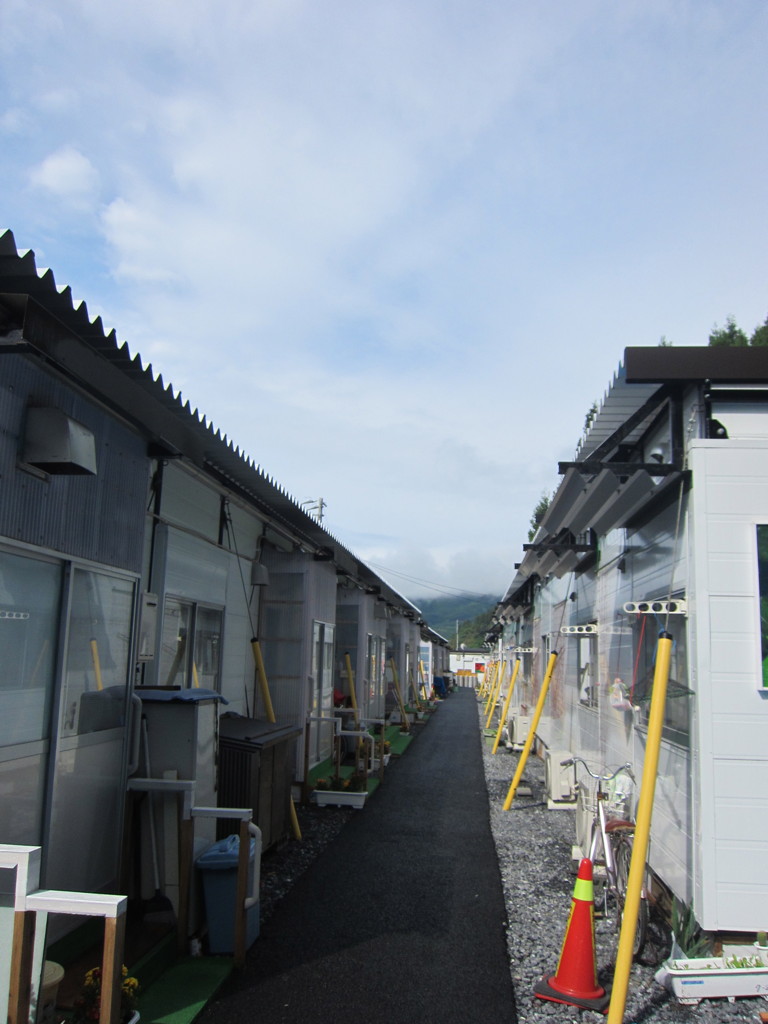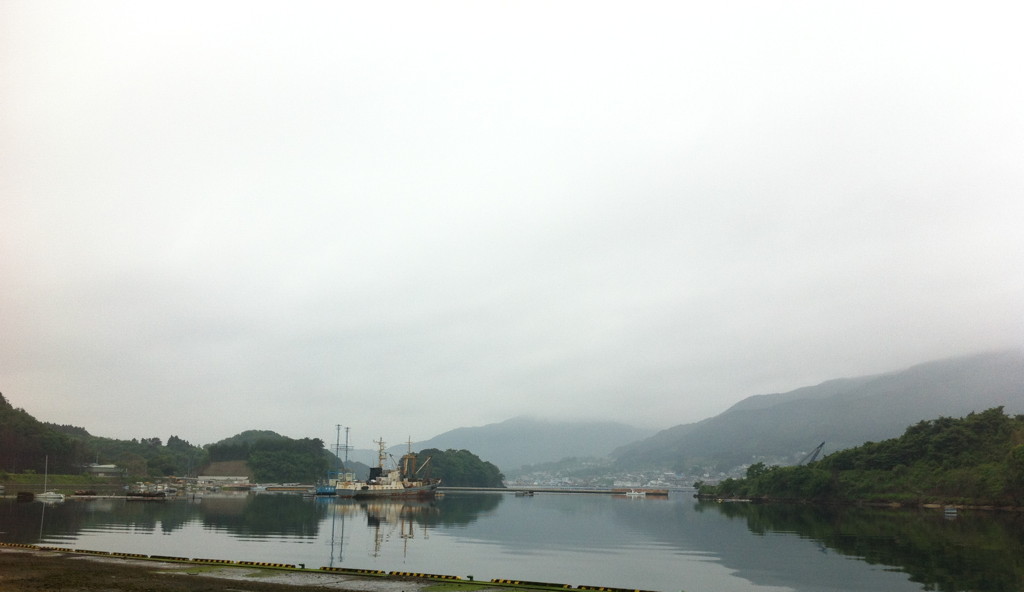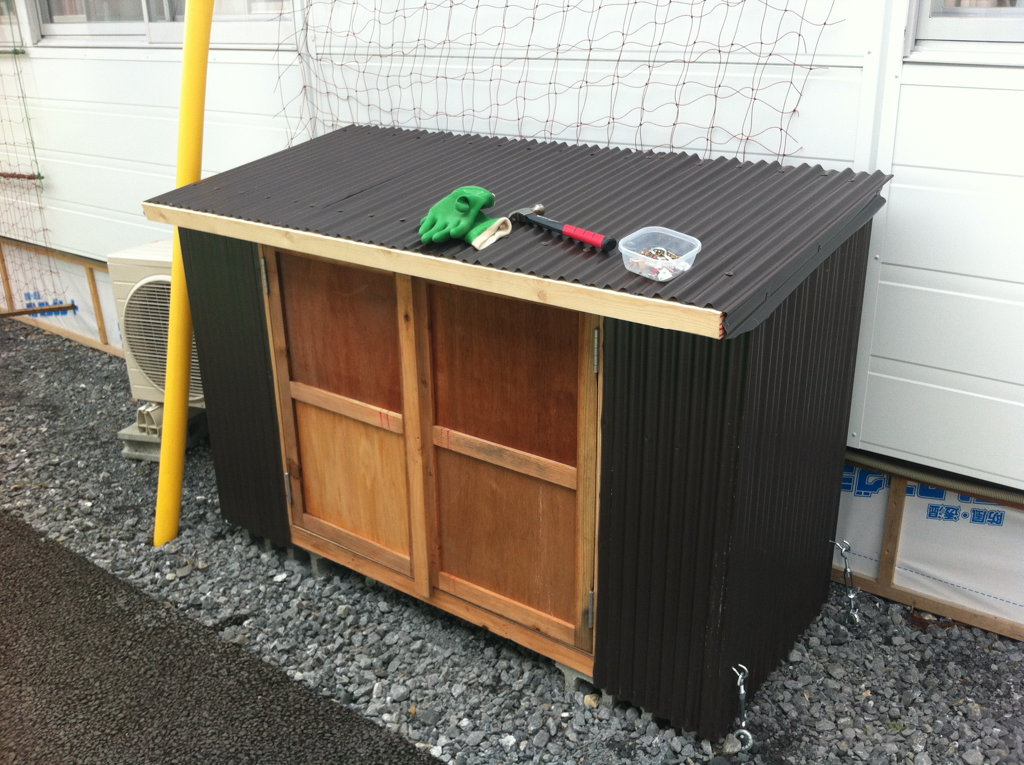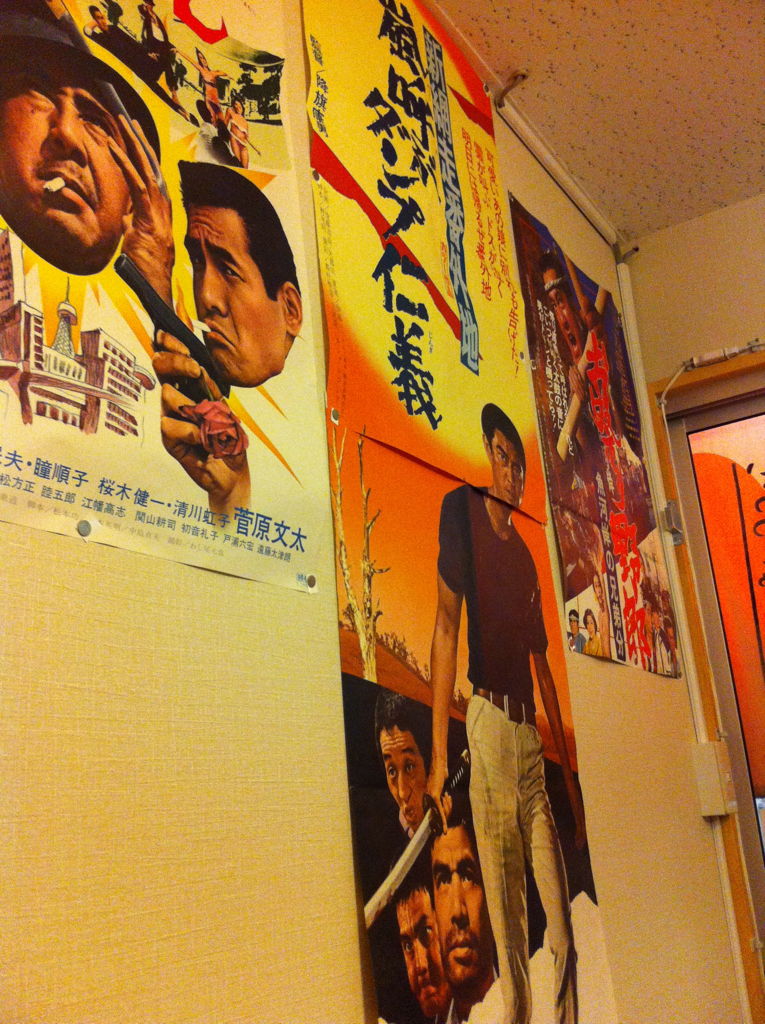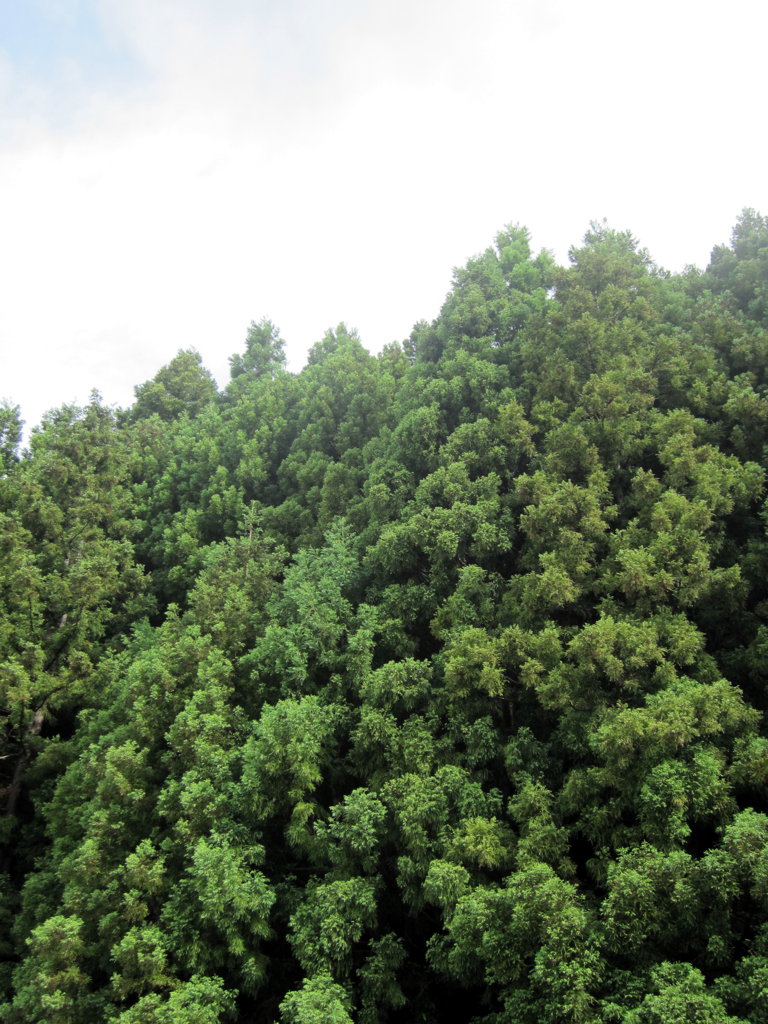It’s been 15 months since the Great East Japan Earthquake, and almost exactly a year since I was last in Iwate prefecture, where we were helping clean up tsunami debris with Tonomagokoro.net, which I wrote up in a post here. I was keen to sign up again, and managed once more to join a trip arranged through the company I work for, this time with another group – Habitat for Humanity – to go back to Iwate Prefecture, and help out and also see how things had moved on in the year by volunteering in Ofunato.
Unlike last year, this trip seemed much simpler – we’d be building outdoor storage units for people living in temporary accommodation in Ofunato, Iwate, meaning less emphasis on breathing masks and working where and when we could due to safety issues, but instead just needing some decent gloves, and some boots – and rain gear. Habitat themselves, I should say, are a much bigger, international concern, and had arranged insurance and quite a few other things we as volunteers had addressed last year.
From Tokyo to Iwate prefecture by road takes a long time – it’s an overnight bus essentially, with a few stops. We left Tokyo at 10.30pm, and rattled on, arriving at around 6.30am to our destination – a collection of metal temporary housing where people have been living for almost a year. The place as you can see from the photos doesn’t look too bad physically – they’re prefab units divided up into rooms depending on family size. We were told there were currently 160 people living in this collection of units. The idea was that since these were very small for each family (I would guesstimate about 35m^2 across a few rooms for a family) the outside storage units would give them somewhere to store kerosene and other things, and free up a little space inside.
[googlemaps https://maps.google.com/?ie=UTF8&ll=39.054593,141.742494&spn=0.006249,0.008905&t=m&z=17&output=embed&w=425&h=350]
As some background, and from what we saw last year, Iwate took a massive blow from the earthquake and tsunami – though it has no record of any elevated radiation readings and is almost 200Km from the crippled Fukushima Daiichi reactors. I mention this as some people in Tokyo still seem to react to news of volunteering with “Aren’t you worried about radiation in Iwate?”. No, not at all.
The first day it rained, but Ofunato is one of those places – fjord like inlets and bays, mountains with dense forest and low cloud – which just look beautiful, no matter what the weather. However, screwing bits of wood together, in the rain, requires a bit of focus. Fortunately, the Habitat people had some camping tarps which we put up, meaning we could be mostly dry whilst trying to get the tricky part of corrugated steel roofing and side walling cut correctly and nailed to the frame. We weren’t the only people working there – Habitat had a couple of experts on hand to give us tips, and they were all locals, and good fun to talk to on tea breaks. There were other volunteers too, including a German chap whose storage units looked so much better than ours if only because he happened to be a master furniture maker.
The truth is, if you look at the cost of transporting us (though not paid for by the NGO), it’s likely comparable to buying these kinds of things from Inaba or some other manufacturer and perhaps even having them fitted. That however is only a part of why the volunteering programme is there, just like last year. The storage units are worthwhile, and needed. It’s also important to the local people that volunteers come up, not just to remind them the outside world hasn’t forgotten them, but also so that people will come, see and return back and tell people of how it is and remind people that the tsunami aftermath is still lurching into recovery at best.
After our first day of screwing wood and tacking steel together and completing one unit, we went off site to an onsen a few kilometers away as a local guide talked us through some of the scenes along the way. Pretty much everything near the ocean looks empty, but for the most part cleaned up, somewhat eerily so in place, just expanses of regularly shaped plots just empty, punctuated by the occasional orderly pile of wreckage and the odd wrecked building, but too orderly, even more so than the in-progress sight we saw last year. Driving through it at night was especially odd, just darkness punctuated by the odd set of traffic lights.
The onsen we went to was perched on top of a cliff overlooking the ocean, and it’s story goes that during the quake and tsunami, it survived by being on top of that outcrop and in the days and weeks which followed it opened itself up for free to locals and for a while to volunteers until other facilities were online, providing some respite from what was surely a terrible looking situation all around.
After the onsen we stopped off for a bit of food at some local izakayas, except these were all in some equivalent of temporary housing huts, meaning they felt new and ‘fake’ as if they were theme places, despite efforts of the people running them to capture the small, cozy feeling most of these places naturally have. That said, cold beer is cold beer, sake is sake, and the yakisoba and yakitori tasted great. All of the places were busy, and it did feel that despite the new surrounds, the definition of temporary might be a lot longer than some thing, but people are getting on with it, even on these basic business levels.
The second day was warmer for the most part, and we were able to finish our second storage unit, seemingly impressing the Habitat people, and ourselves, employing a few things we learned on our first about fittings, especially getting the doors straight!
I should say that the people who live in these accommodations, seemed to be older people (many we were told, over 80!) and young families, and they were all incredibly friendly, often distracting us with ball games and general chatter.
At the end of what felt like an oddly short two days, it was good to be leaving some things which would be of some small use on a day to day basis, and somewhat reassured that people were being helped, but as we drove back through the still shattered coastline, it’s so apparent that the right kind of help is going to take so long, and just like in neighbouring areas battling radiation level questions.
It seems, from listening to the people we met from Ofunato, that what Iwate needs from the outside is for people to remember, and for people to go up there, but not as disaster tourists, but to enjoy the place, the people and the food, spend some money and make them feel like part of the whole again. The pain left in their lives, so apparent from a very moving story told by one of the local Habitat people, is being dealt with, whatever else happens, so the act of just being up there may well be help in itself.
The return journey was just as long obviously, but we stopped off for another onsen at a different place, further inland, and it marked that odd line the tsunami left physically and mentally, in that everything here felt so ‘normal’.
In closing this then, it reminded me I could have volunteered more over the last year, and that though it may well be in a new phase, there’s so much further to go, and the press obsession with Fukushima – a vital story, if one desperate for informed opinion and long term structure and resolution – has left the tsunami hit areas seeming a distant second issue, and yet this is where the death toll was, and this shoulders it’s fair share of pain, though perhaps with it’s tragedy behind it, as other areas wonder what the future will bring them.
There are upsides though – many events are moving to, or even better, moving back to the area, and it looks as if some normal tourists are going back, and according to some stats, some children of Tohoku are leaving lives in the big cities and returning to family roots again, and this may well be for the best and the area can truly recover in years to come.
